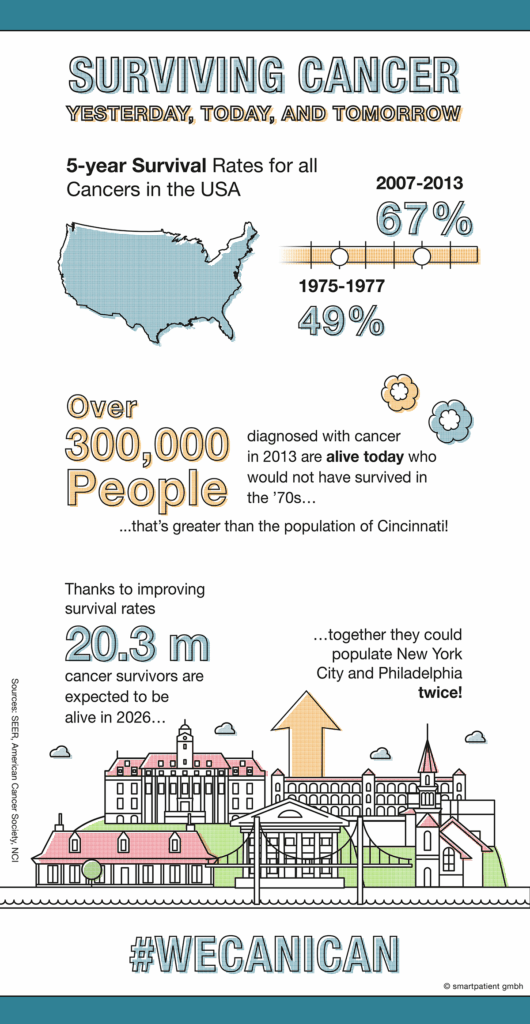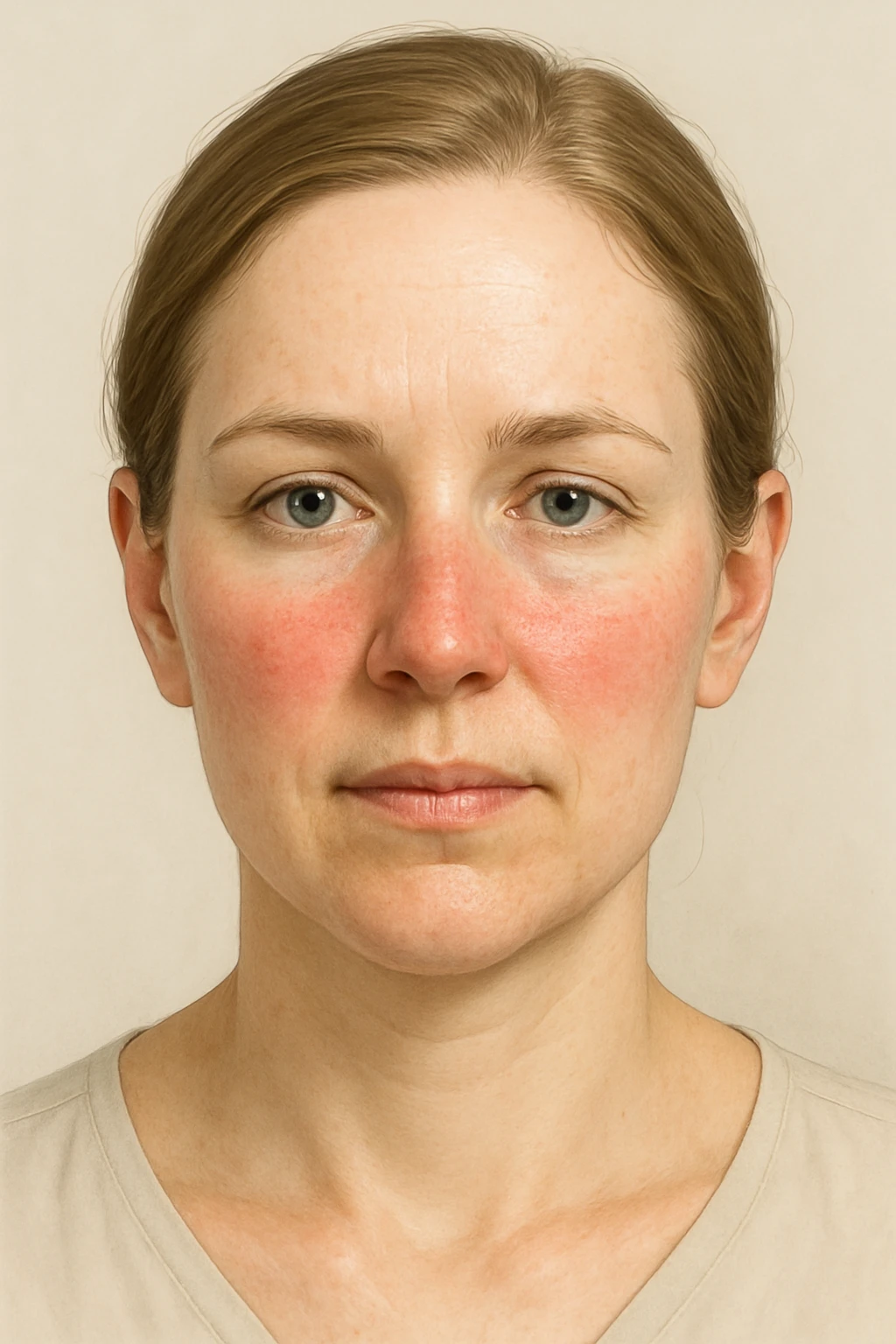Understanding Nasal Cancer Survival Rates
Understanding Nasal Cancer Survival Rates: A Comprehensive Guide
- What Is Nasal Cancer and Why Survival Rates Matter
- How Is Nasal Cancer Diagnosed and Staged
- Survival Rates by Stage: From Localized to Advanced
- Types of Nasal Cancer and Their Prognosis
- Risk Factors That Influence Nasal Cancer Survival Rates
- Common Treatment Strategies and Their Impact on Survival
- Recurrence and Metastasis: Long-Term Survival Considerations
- Quality of Life After Treatment and Survival Challenges
- Survival Rates by Stage: Breaking Down the Numbers
- Comparing Nasal Cancer Survival with Other Rare Cancers
- The Role of Early Diagnosis in Improving Survival Rates
- Surgical Advances and Their Impact on Survival
- Risk Factors That May Influence Survival Outlook
- Can Nasal Surgery Be Combined With Cosmetic Procedures?
- How Long-Term Monitoring Affects Survivorship
- New Research and Experimental Therapies
- 15+ Frequently Asked Questions (FAQ)
What Is Nasal Cancer and Why Survival Rates Matter

Nasal cancer is a rare but serious malignancy that originates in the nasal cavity or the paranasal sinuses. It is often grouped under the term “head and neck cancers,” but its characteristics, symptoms, and outcomes are unique. The survival rate refers to the percentage of patients who are alive after a certain number of years post-diagnosis—commonly measured in 1-year, 5-year, and 10-year intervals.
These rates give a general sense of prognosis and guide treatment decisions. However, it’s crucial to understand that survival statistics are averages based on past data. Every individual’s outcome depends on multiple variables like the cancer subtype, stage at diagnosis, treatment access, age, and overall health.
How Is Nasal Cancer Diagnosed and Staged
Early detection plays a pivotal role in improving nasal cancer survival rates. Diagnosis typically begins with a physical exam and progresses through imaging techniques like CT, MRI, or PET scans, followed by a biopsy to confirm malignancy.
Staging helps determine how far the cancer has spread and is critical in planning treatment. The TNM system is commonly used, which evaluates:
| Component | Meaning |
| T | Size and extent of the primary tumor |
| N | Whether lymph nodes are involved |
| M | Whether the cancer has metastasized |
A combination of these factors determines if the cancer is Stage I (localized) through Stage IV (advanced with distant spread). Naturally, earlier stages tend to have much higher survival rates.
Survival Rates by Stage: From Localized to Advanced
Survival rates drop significantly as cancer progresses through stages. Here’s an overview based on U.S. data from cancer registries:
| Stage | 5-Year Survival Rate |
| Stage I | 83% |
| Stage II | 70% |
| Stage III | 55% |
| Stage IV | 35% |
These numbers reflect averages and should not be taken as definitive for any one patient. For instance, a healthy individual with Stage III nasal cancer may outlive a person with Stage II who has complicating conditions.
In some cases, survival rates are higher when the cancer is surgically accessible or responds well to radiation or chemotherapy. The overall outlook also depends on whether the tumor is squamous cell carcinoma, adenocarcinoma, melanoma, or another rare type.
Types of Nasal Cancer and Their Prognosis
Different subtypes of nasal cancer have different prognoses, even at the same stage. For example:
| Cancer Type | General 5-Year Survival Estimate |
| Squamous Cell Carcinoma | 50–60% |
| Adenocarcinoma | 60–70% |
| Melanoma of Nasal Cavity | 20–30% |
| Esthesioneuroblastoma | 70–80% (localized) |
Squamous cell carcinoma is the most common and has a wide survival range depending on the location and spread. Adenocarcinomas are often occupational in origin (e.g., woodworkers exposed to dust), while rarer forms like esthesioneuroblastomas may initially present with vague symptoms, delaying diagnosis.
In one study, survival rates for patients with esthesioneuroblastoma varied significantly by stage—suggesting the importance of early imaging and targeted therapy.
Risk Factors That Influence Nasal Cancer Survival Rates

Several factors can significantly affect a person’s chance of surviving nasal cancer. These include:
- Age and general health: Younger patients and those with fewer comorbidities tend to have better outcomes.
- Stage at diagnosis: Late-stage cancers often require more aggressive treatment with lower odds of long-term survival.
- Type and aggressiveness of the tumor: Some nasal cancers grow slowly, while others are aggressive and prone to early metastasis.
- Access to specialized care: Patients treated at high-volume cancer centers with multidisciplinary teams often receive more effective, timely treatment.
- Treatment response: Some tumors are highly responsive to radiation or chemotherapy, while others may be resistant.
Environmental and occupational exposures—such as inhaling wood dust, nickel, or formaldehyde—are known risk factors that not only raise the chances of developing nasal cancer but can also complicate prognosis due to cumulative lung or sinus damage.
Common Treatment Strategies and Their Impact on Survival
Treatment approaches vary based on the cancer’s stage and type. They usually involve a combination of the following:
| Treatment | Role in Survival |
| Surgery | Often curative in early-stage nasal cancer |
| Radiation Therapy | Main treatment or adjunct after surgery |
| Chemotherapy | Used for advanced stages or aggressive subtypes |
| Immunotherapy | Under investigation; potential in recurrent cases |
In Stage I or II cases, surgical resection with clear margins may lead to survival rates over 80%. In contrast, Stage IV cancers often require multimodal treatment and carry a much higher risk of recurrence.
Patients with access to newer techniques—like proton beam therapy—may experience fewer complications and better tumor control, which can positively influence survival.
Recurrence and Metastasis: Long-Term Survival Considerations
Even after initial treatment, nasal cancer can return locally or spread to other organs. The lungs, brain, and regional lymph nodes are common sites of metastasis.
Surveillance protocols often include:
- Quarterly imaging for the first year
- Biannual exams for up to 5 years
- Endoscopic exams to detect local recurrence early
A major long-term concern is distant metastasis. If the cancer has spread beyond the head and neck, 5-year survival rates drop below 20% in most studies.
Patients with underlying immune compromise or chronic sinus disease may require closer follow-up and more aggressive management.
Quality of Life After Treatment and Survival Challenges
Post-treatment life for nasal cancer patients often includes both physical and emotional challenges. Some of the most common issues include:
- Facial disfigurement or scarring
- Chronic nasal congestion or loss of smell
- Difficulty breathing or speaking
- Psychological effects, including anxiety or depression
Support services like reconstructive surgery, speech therapy, and mental health counseling play a vital role in improving the overall well-being of survivors. In fact, research has shown that patients who participate in survivorship programs report better quality of life—even when faced with ongoing symptoms.
One reason survivorship tracking is so critical is the growing understanding that cancer doesn’t end at remission—it transitions into a new phase of care.
Survival Rates by Stage: Breaking Down the Numbers
To understand the true impact of nasal cancer on survival, it helps to view the prognosis by stage:
| Stage | 5-Year Survival Rate | Notes |
| Stage I | 80–90% | Often curable with surgery or radiation |
| Stage II | 60–70% | May require combined therapy |
| Stage III | 40–50% | Higher chance of recurrence or spread |
| Stage IV | 10–30% | Often advanced with distant metastases |
These figures are approximate and based on aggregated U.S. data. Individual outcomes can vary depending on tumor type, patient health, and access to care. For instance, esthesioneuroblastoma, a rare type of nasal cancer, may have a better prognosis than squamous cell carcinoma if caught early.
Comparing Nasal Cancer Survival with Other Rare Cancers
When viewed against other uncommon cancers of the head and neck, nasal cancer holds a moderate prognosis. The comparison below helps put survival into perspective:
| Cancer Type | Typical 5-Year Survival Rate |
| Nasopharyngeal cancer | 60% |
| Sinus (ethmoid/maxillary) cancer | 40% |
| Nasal cavity cancer | 50–70% |
| Nasal cancer in dogs | ~10–20% (in treated cases) |
These rates also depend on early detection, which remains a key challenge for nasal tumors due to their subtle onset and resemblance to common sinus issues.
The Role of Early Diagnosis in Improving Survival Rates
One of the clearest factors that improves survival is early diagnosis. Unfortunately, many nasal cancers mimic benign conditions like sinusitis or allergic rhinitis. This delays detection until the cancer has already grown or spread.
Early signs that shouldn’t be ignored include:
- Persistent nasal bleeding or blockage
- Numbness in the face
- Loss of smell not related to infection
- Swelling around the eyes
Many survivors report that their symptoms were initially misattributed to allergies or infections. Public awareness, physician vigilance, and better screening tools could help bridge this diagnostic gap. In patients who undergo nasal endoscopy and biopsy within weeks of symptom onset, the odds of successful treatment increase significantly.
Surgical Advances and Their Impact on Survival

Historically, nasal cancer surgery was associated with large incisions and permanent disfigurement. But modern techniques—such as endoscopic sinus surgery and neuro-navigation—have revolutionized care.
Surgeons can now:
- Access tumors without cutting through the face
- Remove tissue with millimeter precision
- Reduce post-op recovery time
- Minimize blood loss and scarring
Additionally, reconstructive procedures post-resection have improved dramatically. Patients today can often maintain or restore nasal appearance and function. These advances are particularly critical in cases where patients undergo full or partial rhinectomy (removal of the nose), which has profound cosmetic and emotional consequences.
Importantly, studies show that patients treated with minimally invasive surgery followed by targeted radiation enjoy better survival outcomes and fewer long-term complications.
Risk Factors That May Influence Survival Outlook
Several patient-specific and disease-specific factors directly influence survival expectations in nasal cancer:
| Factor | Impact on Survival |
| Tumor Size | Larger tumors generally reduce survival odds |
| Lymph Node Involvement | Nodal spread often signals advanced disease |
| Histologic Subtype | Certain subtypes like melanoma or sarcoma behave more aggressively |
| Patient Age & General Health | Younger, healthier patients fare better |
| HPV Status | Some HPV-related head and neck cancers have improved outcomes |
Understanding these variables helps oncologists tailor treatment plans. For instance, a young patient with a small, localized tumor may not need aggressive chemotherapy, whereas an older individual with extensive local spread might benefit from multimodal therapy.
Can Nasal Surgery Be Combined With Cosmetic Procedures?
In cases where surgical intervention affects facial structure—such as orbital invasion or partial rhinectomy—cosmetic reconstruction plays a vital role in both quality of life and emotional recovery.
Surgeons can perform:
| Reconstruction Type | Benefit |
| Free tissue transfer | Rebuilds nasal or orbital structure using tissue from the arm or thigh |
| 3D-printed prosthetics | Restores nasal symmetry in cases of rhinectomy |
| Cosmetic rhinoplasty | Sometimes incorporated after cancer clearance |
For patients concerned about appearance post-treatment, it’s vital to ask whether aesthetic reconstruction will be offered simultaneously. In some cases, this overlaps with procedures like nose job while having cancer — which requires special planning and multidisciplinary coordination.
How Long-Term Monitoring Affects Survivorship
Even after treatment concludes, patients must undergo years of surveillance. This helps catch:
- Local recurrence
- Distant metastasis
- Secondary cancers due to radiation exposure
- Chronic sinus and nasal dysfunction
Follow-up typically includes nasal endoscopy, imaging (CT/MRI), and lab work every 3–6 months for the first 2–3 years, then annually. Patients should promptly report any recurrence of symptoms like bleeding, blocked nasal passages, or facial pressure.
Survivors often ask: “Am I cancer-free forever?” While cure is possible, the key lies in vigilance. Prompt follow-up care contributes to better secondary survival statistics.
New Research and Experimental Therapies
Emerging treatments are offering renewed hope, especially for patients with aggressive or recurrent nasal tumors:
| Therapy | Description |
| Immunotherapy (e.g., PD-1 inhibitors) | Enhances body’s immune system to recognize and kill cancer cells |
| Targeted radiation | Stereotactic beams limit damage to healthy tissues |
| Clinical trials | Testing novel drug combinations or gene therapy |
Researchers are also exploring whether viral infections like Epstein-Barr or measles play a latent role in tumor development or resistance.
Future trials may include RNA-based vaccines, precision gene editing, or tailored microbiome therapies. Patients with poor prognosis are encouraged to consider enrolling in such studies, especially at NCI-designated cancer centers.
15+ Frequently Asked Questions (FAQ)
1. Is nasal cancer always life-threatening?
Not always. If caught early and treated appropriately, nasal cancer can often be managed successfully. Life expectancy improves significantly with early-stage detection, good overall health, and access to advanced treatment options. Later stages or rare aggressive subtypes pose more of a survival risk.
2. How do I differentiate nasal cancer from chronic sinus infections?
While both can cause nasal congestion and discharge, nasal cancer often involves symptoms that don’t respond to antibiotics, are persistent, and include bleeding, numbness, or facial asymmetry. A biopsy or CT scan is required for proper diagnosis.
3. Can nasal cancer return after treatment?
Yes, recurrence is possible, particularly within the first 2–3 years post-treatment. Patients need regular imaging and physical exams to detect recurrence early, when it’s more manageable.
4. Does nasal cancer cause headaches?
In some cases, especially when tumors press on surrounding structures like the sinuses, eyes, or nerves, persistent headaches may occur. This is more common in advanced or deeply infiltrating tumors.
5. Are all nasal tumors cancerous?
No. Nasal polyps, cysts, and benign tumors like papillomas or osteomas can also form in the nasal cavity. Only a biopsy can determine whether a growth is malignant.
6. How do nasal cancer survival rates compare to other head and neck cancers?
They are somewhat lower than for throat or laryngeal cancers due to delayed diagnosis and anatomical challenges. However, with improved diagnostics and multidisciplinary care, survival has increased steadily.
7. Can nasal cancer spread to the brain?
Yes, in rare and advanced cases. Because the nasal cavity is close to the cranial base, tumors can extend through bone or via nerves into brain tissues, which complicates treatment and worsens prognosis.
8. What causes nasal cancer in nonsmokers?
While smoking increases risk, nonsmokers can develop nasal cancer due to factors like chemical exposure (e.g., wood dust, formaldehyde), viral infections, genetic predisposition, or chronic inflammation.
9. Is radiation therapy alone enough to treat nasal cancer?
Sometimes it is, especially in early-stage cancers or patients unfit for surgery. However, combined treatments (surgery + radiation or chemotherapy) generally yield higher survival rates in moderate to advanced stages.
10. Does insurance cover nasal cancer reconstruction surgeries?
In most cases, yes. When reconstruction is medically necessary due to cancer removal, it is typically covered. Elective cosmetic enhancements might not be, unless function or appearance is significantly impacted.
11. Are there gender differences in nasal cancer outcomes?
Studies suggest men are more likely to develop nasal cancer, possibly due to higher occupational exposure. However, survival rates between genders are relatively similar when adjusting for stage and treatment access.
12. Can children get nasal cancer?
It’s extremely rare in children. When it does occur, it’s often part of a rare cancer syndrome or genetic mutation. Pediatric ENT specialists typically handle such cases at specialized cancer centers.
13. How long does it take to recover from nasal cancer surgery?
Recovery can take several weeks to months, depending on the surgery’s extent. Simple tumor excisions heal faster, while complex resections with reconstruction may require long-term rehab and follow-up.
14. Are there foods or supplements that help nasal cancer patients?
While no food can cure cancer, diets rich in antioxidants, lean proteins, and anti-inflammatory ingredients support the immune system. Nutritional guidance from oncology dietitians can assist patients during treatment.
15. What emotional support is available for nasal cancer patients?
Many cancer centers offer access to psychologists, support groups, social workers, and peer networks. Because nasal cancer can impact facial appearance and breathing, emotional health support is crucial for long-term recovery.












